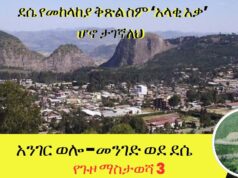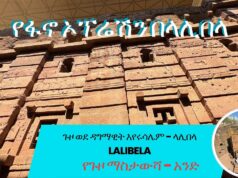When Wang Yijun put Ethiopia’s most expensive real estate project on the market, he experienced a strange phenomenon. People preferred the lowest floors over those with panoramic city views. “Power cuts mean elevators in this city often don’t work,” explains Wang, the site manager. “So the bottom-floor flats became the most valuable. You won’t see this pricing in any Chinese city.”
Replicating China’s urban model in Africa has its challenges, but with limited developable space in Addis Ababa — the capital is surrounded by protected farmland — Wang believes high-rise living, such as Tsehay Real Estate’s $60 million Poli Lotus development, is inevitable.

The Poli Lotus estate on the outskirts of Addis Ababa cost Chinese firm Tsehay Real Estate $60 million. Credit: Jenni Marsh/CNN
Theodros Amdeberhan, an Ethiopian lawyer, last year bought a three-bedroom, fifth-floor apartment here for about 3.5 million birr ($127,000). “Local developers never deliver on time,” says Amdeberhan. The complex opened in 2016, and so far 70% of lots have sold. “When Mr Wang offered me a good price, I didn’t hesitate,” he says.
With red lanterns swaying over its entrance, the palm-tree peppered compound of 13 towers could easily be in Shenzhen, Chongqing or the suburbs of Shanghai. It’s the sort of Chinese-ification that permeates much of Addis.
 The Metro train passes through central Addis Ababa. Credit: Jenni Marsh/CNN
The Metro train passes through central Addis Ababa. Credit: Jenni Marsh/CNNCars chug through the city on smooth Chinese roads, Chinese cranes lift the skyline, sewing machines hum in Chinese factories in Chinese-owned industrial parks, tourists arrive at the Chinese-upgraded airport and commuters ride modern Chinese trains to work.
Simply put, Addis Ababa is becoming the city that China built — but at what diplomatic and economic cost?
Simply put, Addis Ababa is becoming the city that China built — but at what diplomatic and economic cost?
A city without addresses
Located 2,355 meters above sea level, Addis Ababa is one of the highest capitals in the world. Officials say 2.7 million people call it home, but that’s based on a census from 2007. The real number is surely far bigger. Few buildings here have addresses, so taxi drivers operate by landmarks. And because Ethiopia was never colonized, barring a brief Italian occupation between 1936 and 1941, Addis lacks the European infrastructure that underpins many African metropolises. “It was never planned to be a city,” says Alexandra Thorer, an architect who lived in Addis as a child, and wrote her thesis on the city’s urbanization.
























